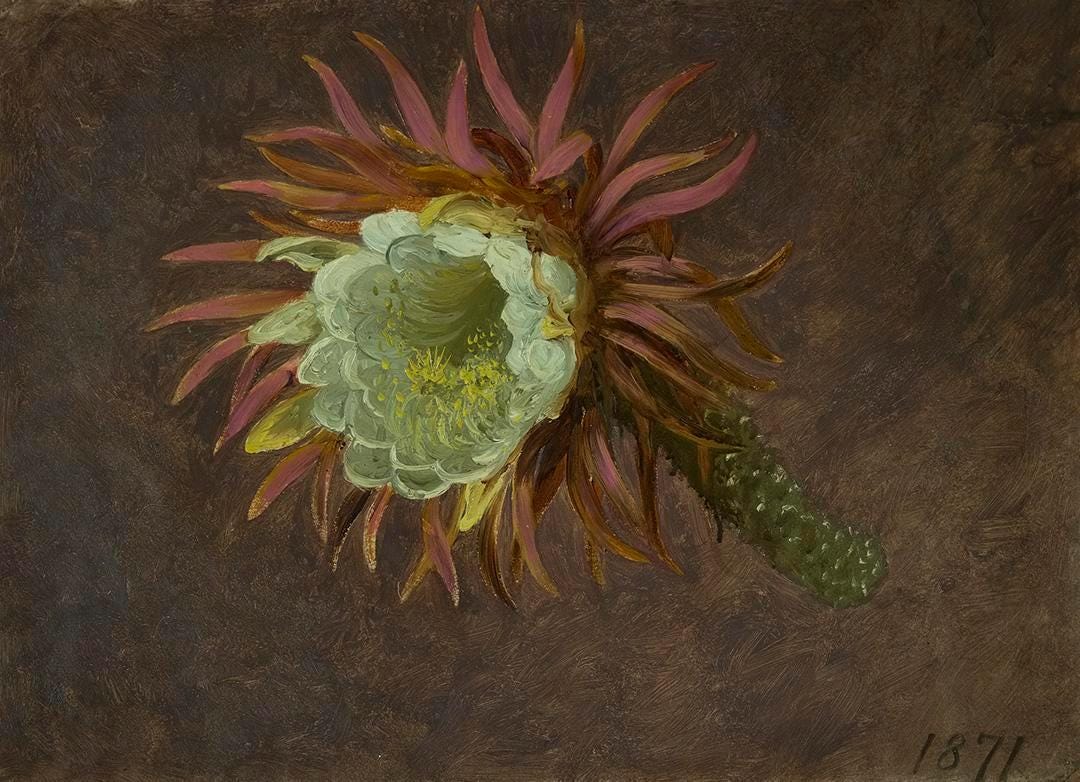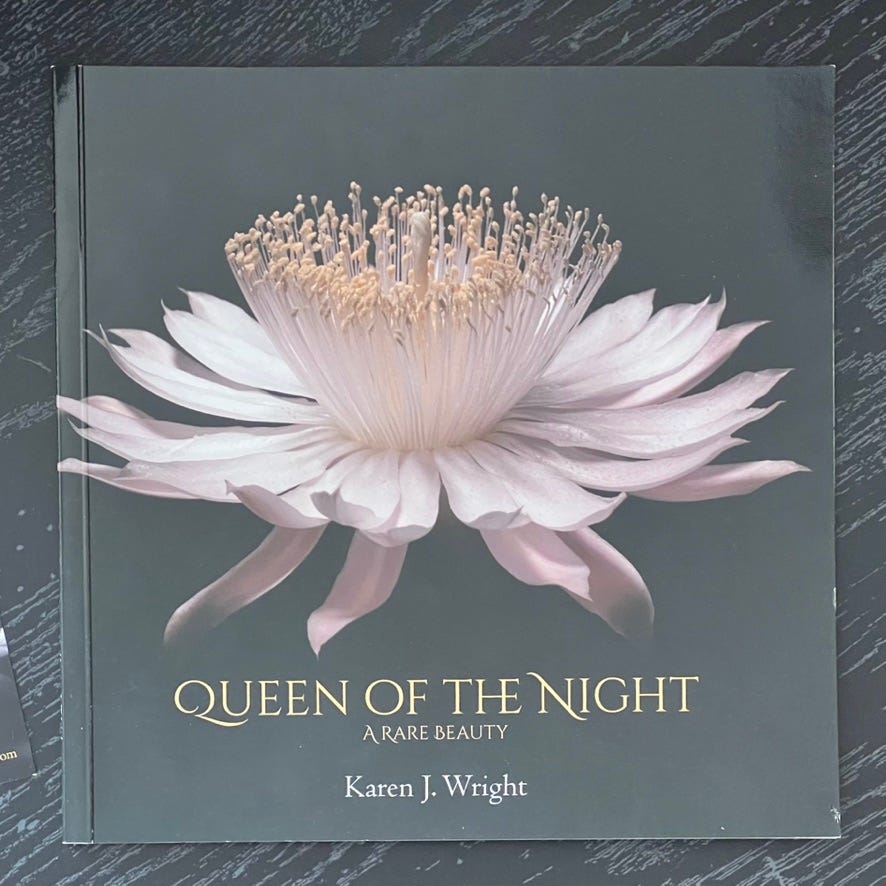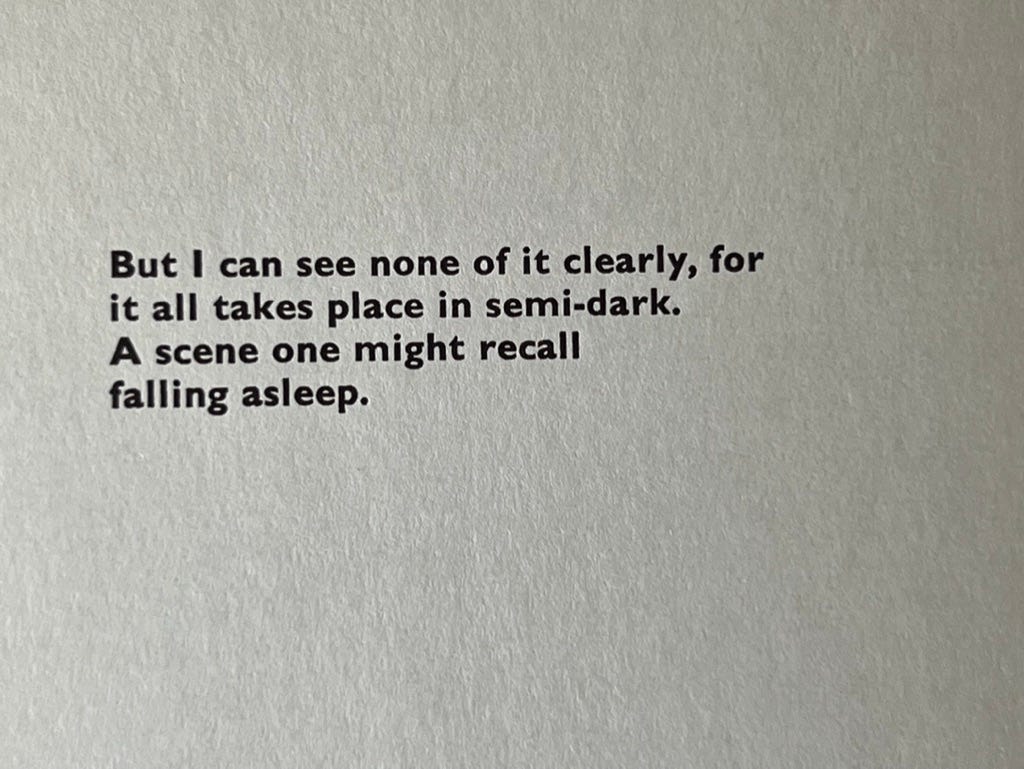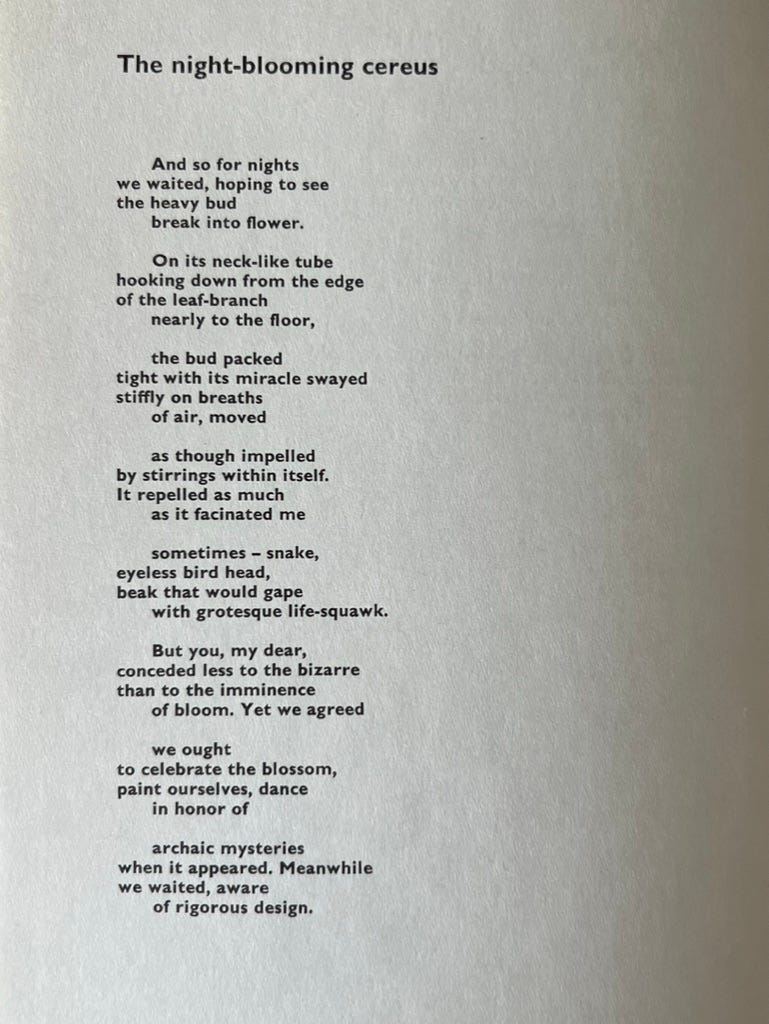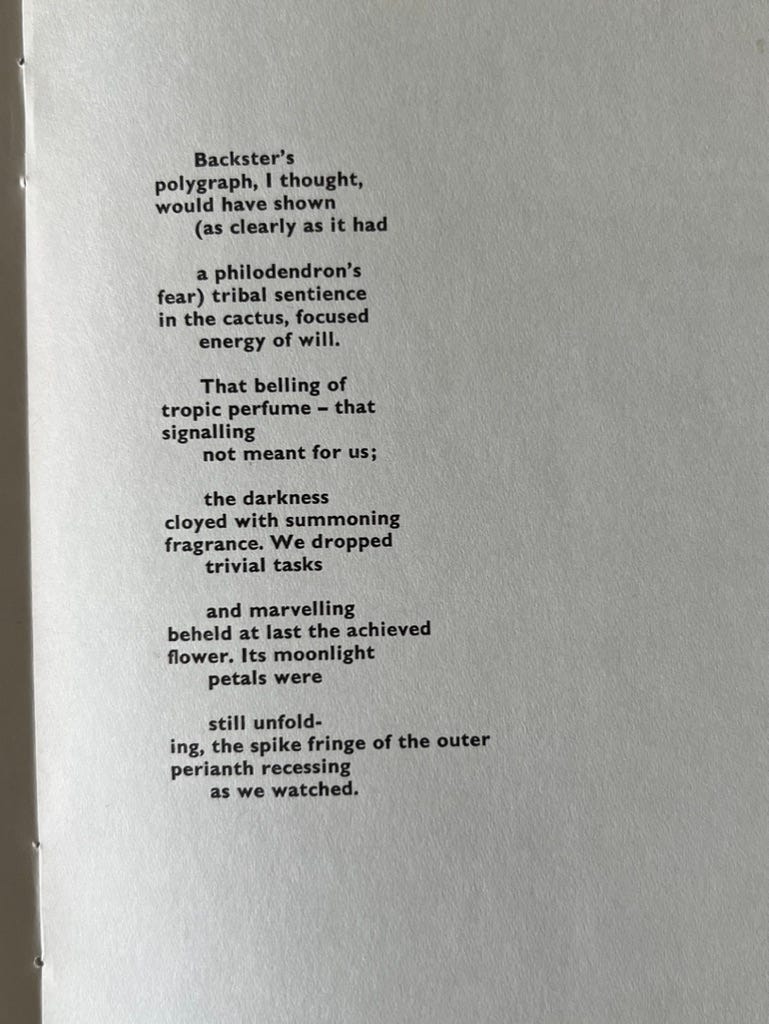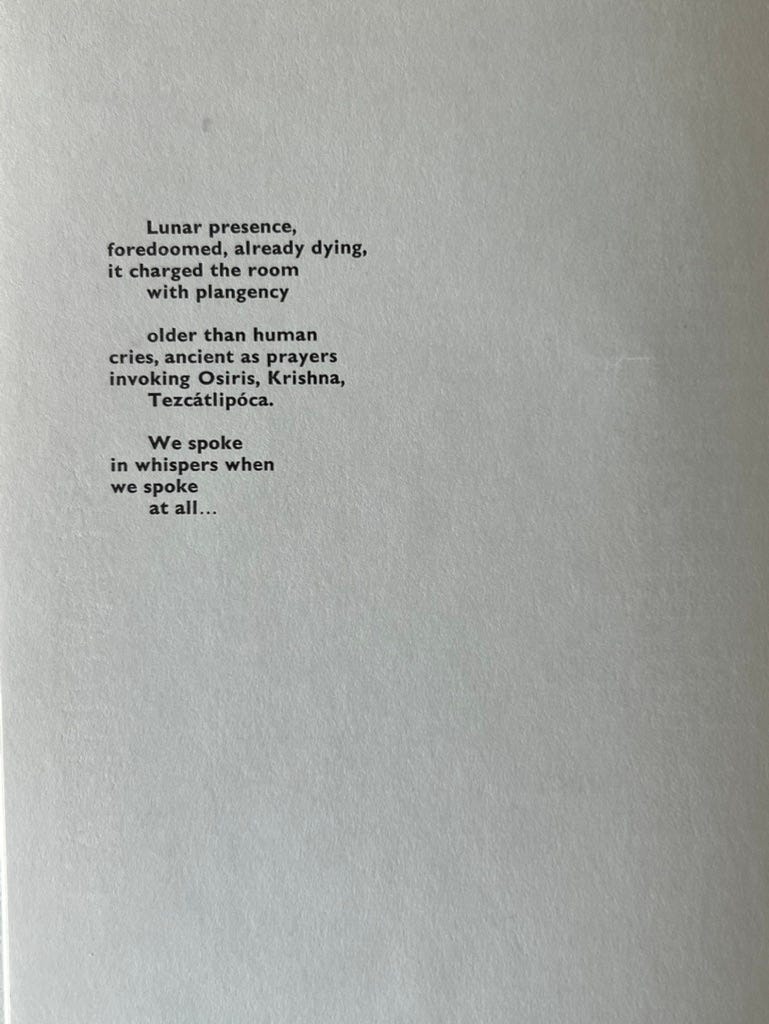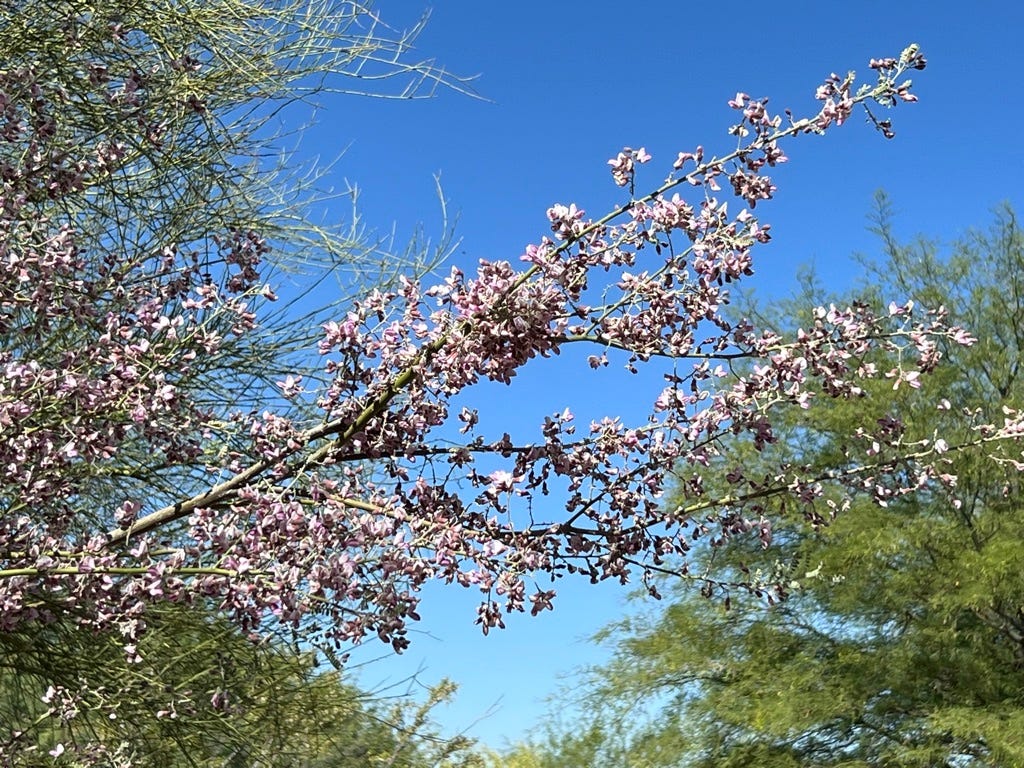Capturing The Queen: The problem of painting a nocturne
Martin Johnson Heade, Robert Thornton, Erasmus Darwin, Robert Hayden, Emily Dickinson
This week I made a trip to Tucson to deliver a painting to Tohono Chul Park for this year’s Queen of the Night exhibit, an annual celebration of the night-blooming cactus that flowers en masse in the Sonoran Desert each summer. Each year Tohono Chul celebrates its world famous collection of Peniocereus greggii or night-blooming cereus, with an exhibition in the Entry Gallery. Artists are asked to contribute works that represent any part of the Peniocereus greggii plant. This year the exhibit includes 15 works by local artists and will run from June 1st through July 28th.
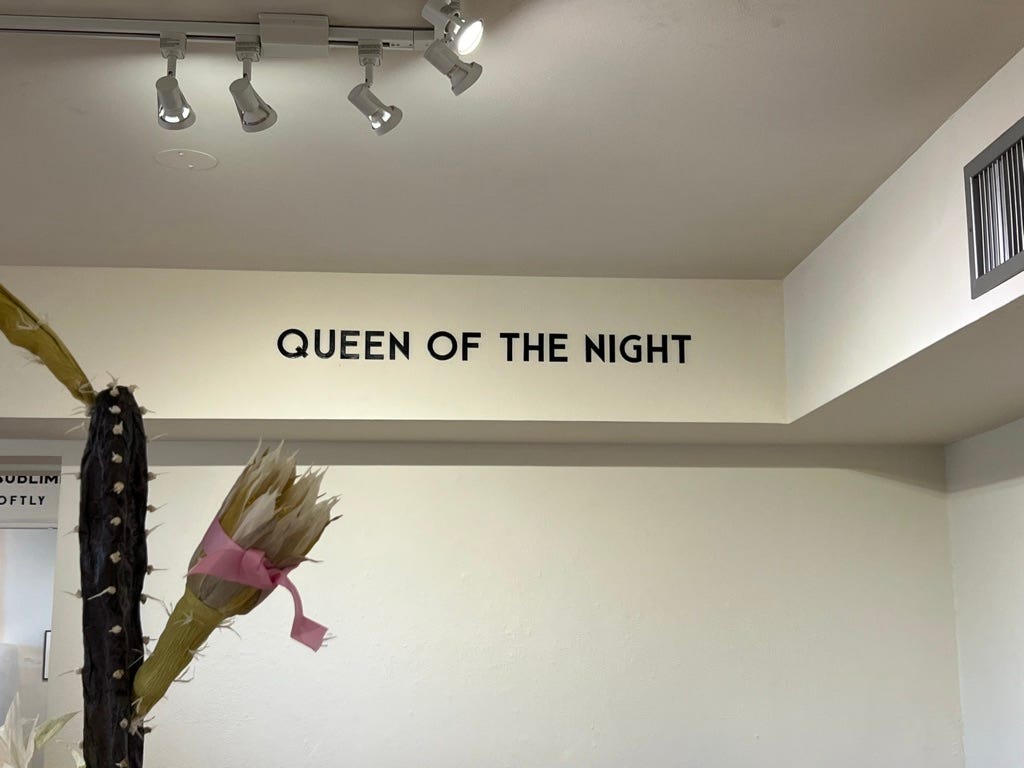
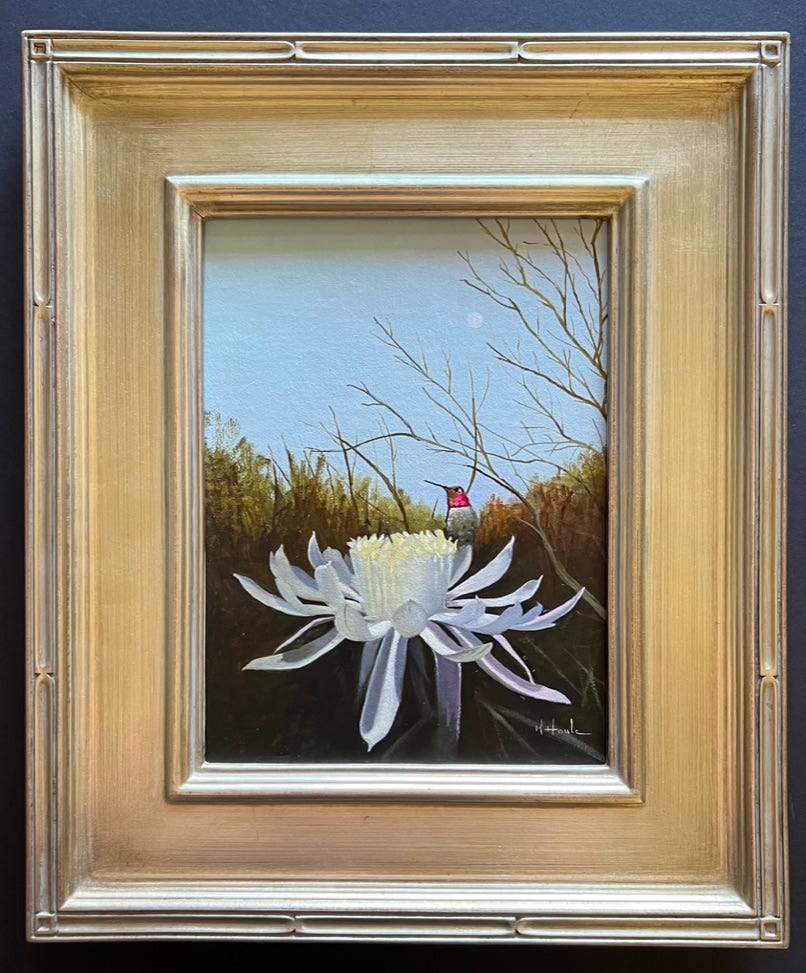
This painting is on exhibit at Tohono Chul Gallery through July 28, 2024. Please contact the gallery for purchase information: exhibits@tohonochul.org
Capturing The Queen is no small feat. For weeks the horticultural staff at Tohono Chul measures the buds of the night blooming flowers daily to try to predict when the bloom will occur. It’s a tricky business, as the mechanism that causes the flowers to open on the same night isn’t well understood. When the flowers do decide to put on a show, they often give only a few hours notice. Anyone who wants to witness the event in person must be willing to drop everything and head out into the desert. For the months of June and July serious garden partiers are on call. For me, it’s a two-hour drive from Phoenix, so I need to make my hotel reservation and leave within an hour of the initial announcement. I’ve been able to make the trip twice in the last ten years.
Recent Bloom Night dates:
2017 July 18
2018 June 23
2019 July 13
2020 June 5 (Bloom Night was live streamed, the park was closed during the pandemic. It was still beautiful)
2021 June 30
2022 June 25
2023 July 23
2024 ???? ??
Still, let’s say that all goes well. The event is well predicted and you make it to the event on time. There’s music, strings of lights, an oral retelling of the Tohono O'odham myth of Old Mother Whitehead as the sun sets. At dusk the moon is rising, bats and nighthawks circle overhead. Darkness encourages the white and blush flowers to open for bats and hawk moths. There is still the problem of capturing the experience of a nocturne.
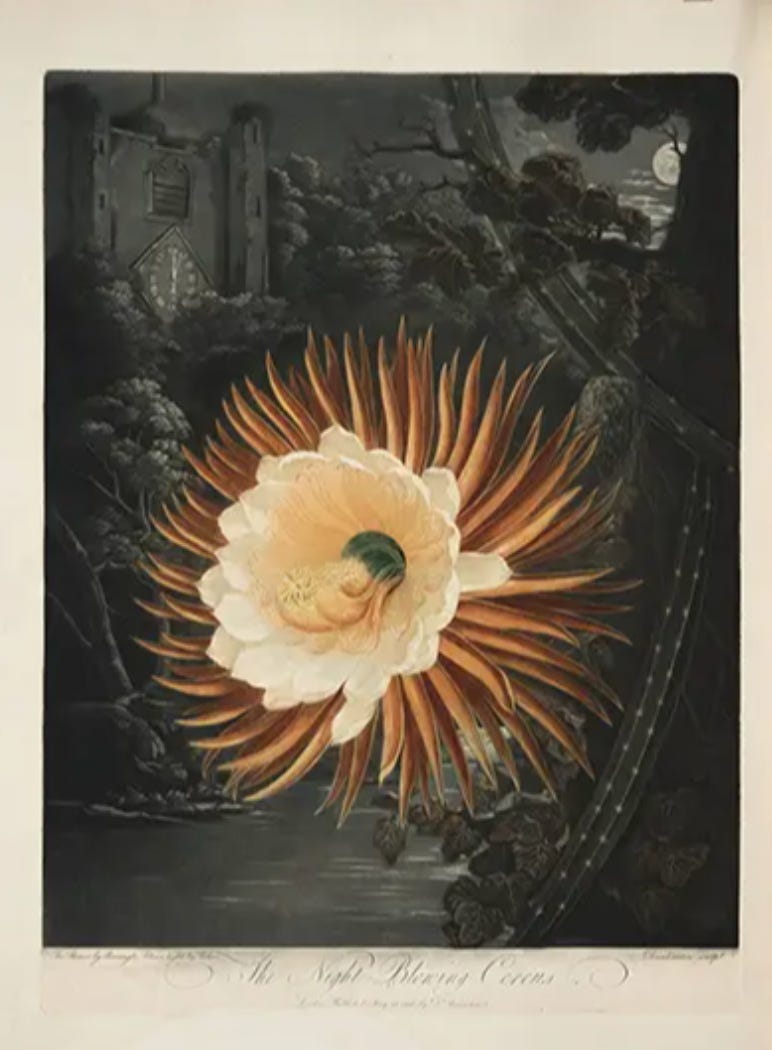
Robert Thornton, publisher of The Temple of Flora, set out to illustrate the Linnaean system of naming plants with glorious portraits of flowers posed in their native habitats. Thornton wrote;
“Each scenery is appropriated to the subject. Thus in the night-blowing CEREUS you have the moon playing on the dimpled water, and the turret-clock points XII, the hour at night when this flower is in its full expanse.”
The background of the night-blooming cereus plate includes a clock striking midnight, in case there is any question. A poem about the night-blooming cereus The Midnite Show by Johnathan Williams mentions the Thornton plate by name.
Erasmus Darwin THE LOVES OF THE PLANTS from CANTO IV. Refulgent CEREA!--at the dusky hour She seeks with pensive step the mountain-bower, Bright as the blush of rising morn, and warms The dull cold eye of Midnight with her charms. There to the skies she lifts her pencill'd brows, Opes her fair lips, and breathes her virgin vows; Eyes the white zenyth; counts the suns, that roll Their distant fires, and blaze around the Pole; Or marks where Jove directs his glittering car O'er Heaven's blue vault,--Herself a brighter star. --There as soft Zephyrs sweep with pausing airs Thy snowy neck, and part thy shadowy hairs, Sweet Maid of Night! to Cynthia's sober beams Glows thy warm cheek, thy polish'd bosom gleams. In crowds around thee gaze the admiring swains, And guard in silence the enchanted plains; Drop the still tear, or breathe the impassion'd sigh, And drink inebriate rapture from thine eye. Thus, when old Needwood's hoary scenes the Night Paints with blue shadow, and with milky light; Where MUNDY pour'd, the listening nymphs among, Loud to the echoing vales his parting song; With measured step the Fairy Sovereign treads, Shakes her high plume, and glitters o'er the meads; Round each green holly leads her sportive train, And little footsteps mark the circled plain; Each haunted rill with silver voices rings, And Night's sweet bird in livelier accents sings.
Most visitors to Tohono Chul’s Bloom Night try to capture the queen using a camera phone. Botanical night photography comes with its own set of problems. Photographer Karen Wright, who has been photographing the night blooming cereus for years, gives her advice on capturing this night-blooming flower on her website creative exposures photo.
Robert Hayden
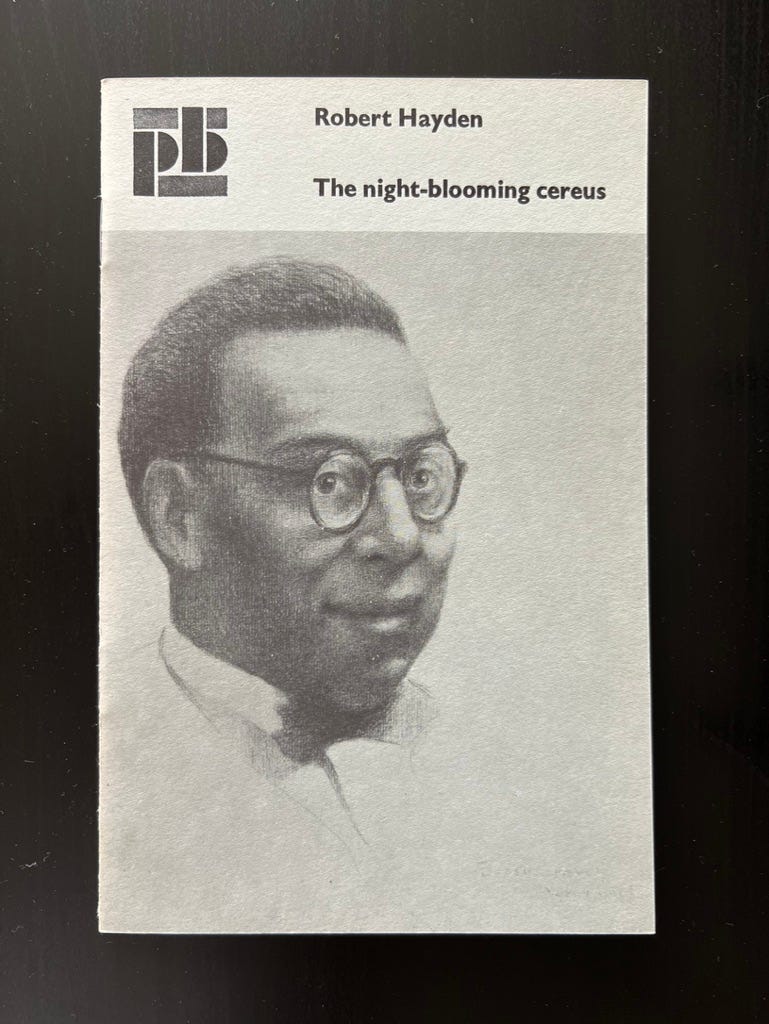
Like the Sonoran Desert itself, the night-blooming cereus is at the center of a Venn diagram of Mexico and the United States. Scientist and poet Gary Paul Nabhan believes in the dissolution of boundaries between disciplines. His Cross-Pollinations: The Marriage of Science and Poetry from Milkweed Editions contains a fascinating story about the benefits of color blindness when hunting the night-blooming cactus flower.
Seeking out the night-blooming cactus requires a sense of adventure. For a homebody like me, even venturing out to the botanical garden a bit of a big deal. If I have to travel I tend to turn into Emily Dickinson in a letter to Elizabeth Holland complaining about having to move:
“I cannot tell you how we moved. I had rather not remember. I believe my "effects" were brought in a bandbox, and the "deathless me," on foot, not many moments after. I took at the time a memorandum of my several senses, and also of my hat and coat, and my best shoes - but it was lost in the melee…”
I’m usually very happy to stay at home in my routines that allow me to paint and write with as little interruption as possible. Travel is difficult for people like me, but I make an exception to commune with the night-flowering. My bag is packed. On bloom night I will be out with lanterns looking for myself.





